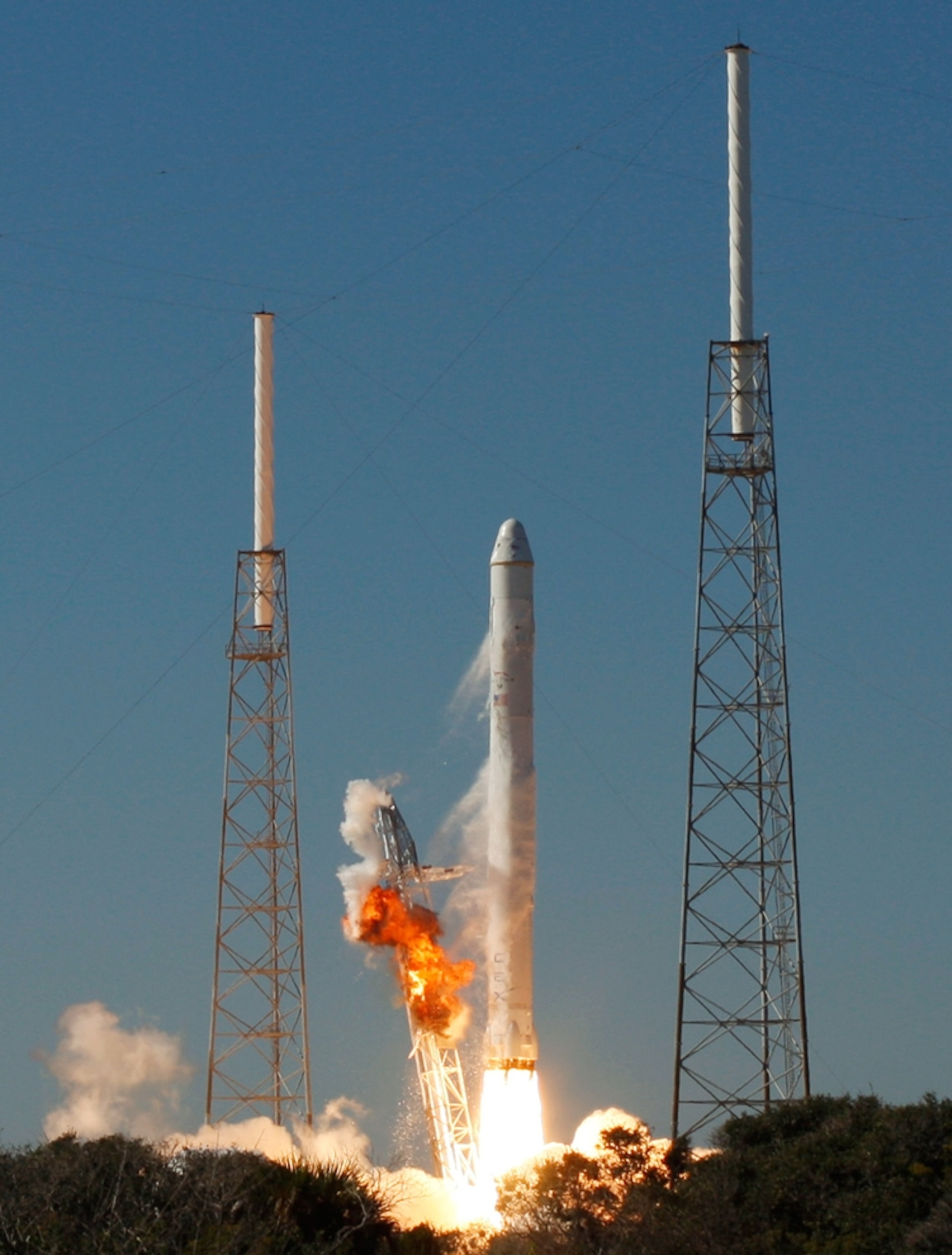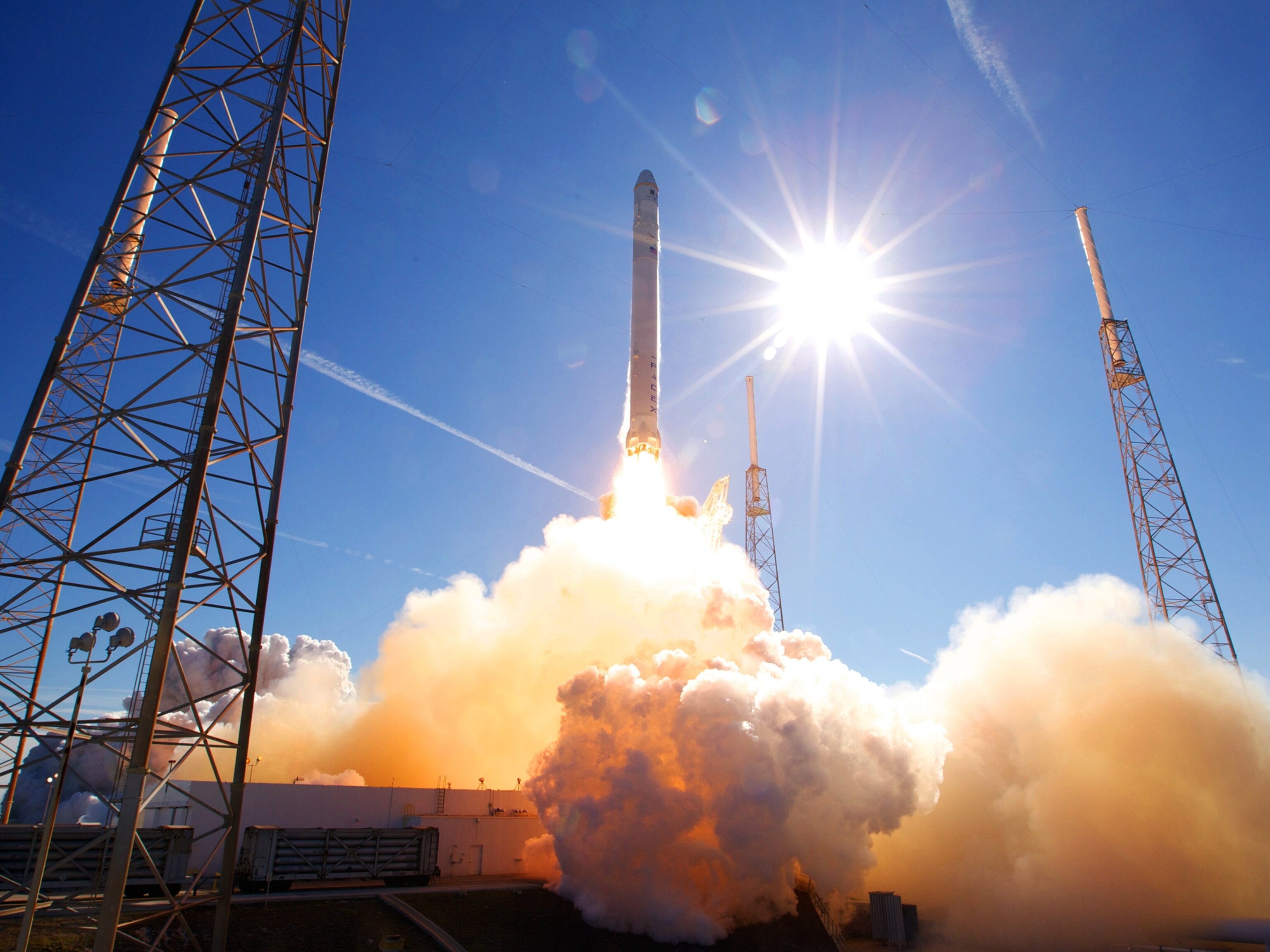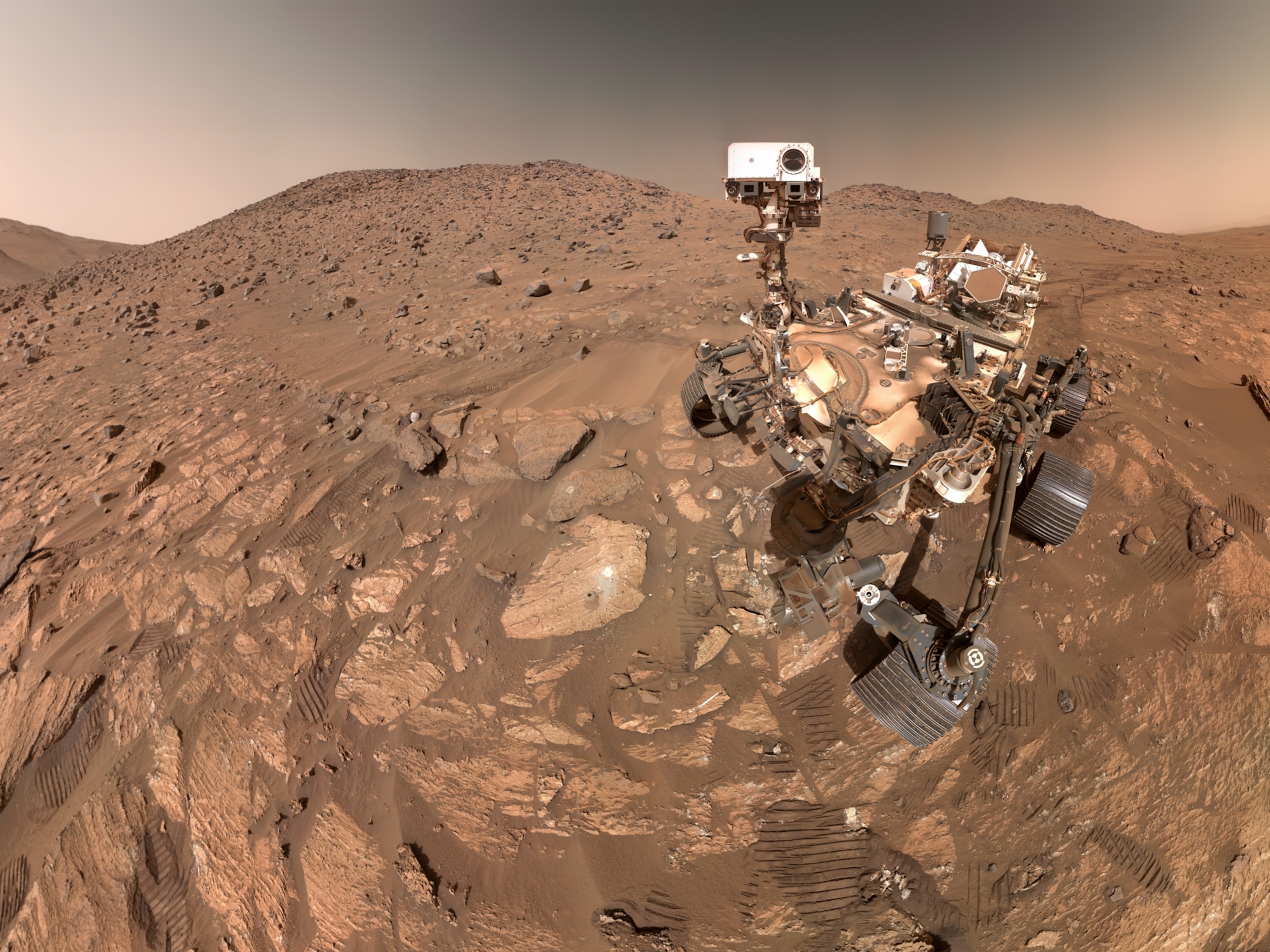
SpaceX to Launch First Private Craft to Space Station—Next Stop: Mars?
Firm's spacecraft being designed with deep space in mind, founder says.
The SpaceX Dragon capsule is almost ready to become the first private spacecraft to visit the International Space Station (ISS), NASA and SpaceX officials announced today.
Following what's known as a flight-readiness review, Space Exploration Technologies Corporation, aka SpaceX, is so far on course to launch the reusable Dragon aboard the firm's Falcon 9 rocket later this month, NASA said at a Monday press briefing.
(See a picture of the Falcon 9 during an orbital test flight.)
But SpaceX founder Elon Musk already has his eyes on a bigger prize: putting people on Mars as quickly as possible.
According to Musk, all SpaceX ventures—including the Dragon mission—are being designed to advance this ambitious larger goal.
"I'm a big believer in humanity becoming a multiplanetary species," Musk said.
"At SpaceX our goal is to keep pushing innovations in rocketry and scaling things up to get to a point where we can allow people to basically move to Mars."
Musk envisions human colonies on Mars within the next 30 years or so, and he's said he'd like to retire there. (Musk isn't alone: See "Why Did 400 People Volunteer For a One-Way Trip to Mars?")
"People are really excited about the idea of Mars, but it's got to be done without blowing the national budget," Musk said. "So the thing that's really key for rockets is full and rapid reusability.
"Imagine a plane you could only use once a month or a plane where you had to replace the wings after every flight—they wouldn't be very useful.
"Designing more efficient reusable [space] equipment—which can withstand the forces of reentry and be quickly pressed back into service—is the breakthrough.
"At SpaceX we're going to try to solve this problem, but it's superhard. In the past when people have tried, it hasn't worked out. There are a lot of people who just don't think it's possible, including much of the space industry."
(Related: "Astronauts Could Ride Asteroids to Mars, Study Says.")
SpaceX Rockets to Be Mars Ready?
Dragon is scheduled to blast off from Cape Canaveral, Florida, on April 30. The unmanned test flight will deliver some 1,150 pounds (521 kilograms) of cargo to astronauts aboard the space station and then will carry some cargo back to Earth.
The mission could prove to be a milestone in the new space race to commercialize U.S. space travel now that NASA's space shuttle program has ended.
Since last year NASA has paid to use Russian vehicles to deliver cargo and astronauts aloft. The space agency has also partially funded some private ventures, including SpaceX.
(Also see "After Space Shuttle, Does U.S. Have a Future in Space?")
In April 2011, for instance, NASA awarded SpaceX a contract to develop a crewed version of the Dragon capsule, which is being designed to carry up to seven astronauts and their gear to low-Earth orbit.
Musk knows that many setbacks await. He places the odds at total success for Dragon's upcoming mission, including successful docking with the ISS, at perhaps 60 percent.
"We just hope to make steady progress and try to get as far as we possibly can and make sure that rocket technology keeps getting better," Musk said.
In addition, the company's Falcon Heavy rocket—which builds off the Falcon 9—is being designed to become the world's most powerful currently operating rocket by a factor of two, second only to the Apollo missions' Saturn V among all rockets yet built.
(Related: Explore high-resolution, zoomable pictures of spacecraft.)
Like other SpaceX ventures, the Falcon Heavy is being built for nearer-term objectives and being made Mars ready at the same time, said SpaceX spokesperson Kirstin Grantham.
"We're talking about a vehicle that would allow us to carry heavier payloads for commercial customers," she explained.
"But it would also make possible unmanned scientific missions to Mars, which would be a good precursor to manned missions, and we've already talked with NASA Ames Research Center about [partnering] on that kind of mission."
For Mars Missions, Have to Do It Smart
Robert Zubrin, president of the nonprofit Mars Society, believes that SpaceX is already showing that such Mars missions are feasible from the critical big-picture perspectives of cost and scheduling.
"It's a huge step for an entrepreneurial company to begin operations to supply the space station, and frankly they've built a system that is good enough to transport crew, with regulatory approval the only thing standing in the way," he said.
"And they've done this for a tiny fraction of the money, something like one-twentieth of what NASA proposed to spend developing their own Orion or other multiple-purpose vehicle.
"This shows that things of this sort can be developed for hundreds of millions of dollars, not tens of billions of dollars, and that is a profound difference."
(Also see pictures: "Mock Mars Mission 'Returns' to Earth.")
Zubrin also noted that SpaceX's rapid progress suggests crewed Mars missions could become a reality within years, not decades.
"They've been at this cargo thing for only three years or so, and now they are flying it," he said. "NASA started working on the Orion Multi-Purpose Crew Vehicle circa 2002, and it still hasn't flown.
"We can afford to send humans to Mars," Zubrin continued. "Musk has shown us that we can do it, provided that we do it smart."
Partners Needed for Human Spaceflight?
Scott Pace, director of George Washington University's Space Policy Institute, is also hoping to see a successful launch of Dragon, which he called important for the ISS program.
But Pace doesn't see much relation at all between this flight and any future Mars mission.
"Going to Mars is orders and orders of magnitude [more challenging] in terms of expense and in terms of technology."
Although he's an advocate of manned Mars missions, Pace added that after NASA's Mars Science Laboratory—aka Curiosity—lands on the red planet in August 2012, future Mars plans are very uncertain for space programs around the world.
"The strategy for Mars exploration is just not defined right now," he said. "A realistic look at the budget and the politics involved is such that I don't think anyone believes that we'll have a human mission beyond low-Earth orbit that's not an international mission."
Considering the likely partners in such a venture—countries such as Japan, China, and India—Pace says the moon is a more likely near-term target for human missions. (See "China's First Space Walk Mission a Step Toward the Moon?")
A lunar landing would be "very challenging for many countries, but it's also doable. A Mars mission or an asteroid mission is really far out for them, and I don't think we're going to go someplace where you don't have partners."
NASA officials would likely agree: "NASA's focus has been, in terms of private spacecraft, to get cargo to low-Earth orbit and then to get people to low-Earth orbit," said agency spokesperson Michael Braukus.
"In terms of our focus on deeper space, the President has laid out the first target for us as an asteroid landing by 2025, so we really haven't been focusing on Mars."
Becoming a Spacefaring Species
The Mars Society's Zubrin strongly advocates that the red planet be made a far more immediate priority for three reasons: the science, the challenge, and the future.
"We're going to find out by going to Mars whether another planet in our solar system developed life, and that will give us a better idea of how prevalent life might be elsewhere as well," he explained. (See "Life on Mars Found by NASA's Viking Mission?")
"And the challenge, I think, will encourage millions to enter the fields of science and engineering—just as Apollo did—but this time to an even greater extent, because those fields are far more open to women than they once were."
Finally, Zubrin said, humans should visit Mars for the future of the species.
"Mars is the closest planet that has the resources on it to support life and a civilization," he said.
"If we can establish a foothold on another world, then 200 years from now there will be a new branch of human civilization on Mars, and humanity will become a spacefaring species with the entire universe open to it."








